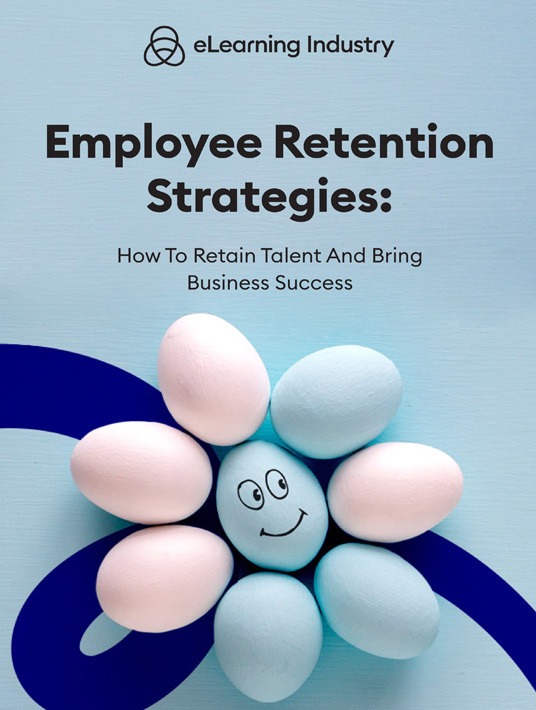Why Every Organization Needs An Effective Employee Retention Plan
Is an employee retention plan really necessary? Many organizations still fall into the “upper hand” trap. They think that employees are lucky to be on their payroll and that there are thousands of people standing in line for the position. What they fail to see is that every employee is an investment. You spend time and money to cultivate their skills. Plus, hiring and training their replacements digs into your profit margin. Not to mention, the recruiting competition is steep these days. You need to stand a cut above the rest to secure top talent. Here are 7 reasons why you need a solid employee retention plan for your organization.

7 Reasons To Create An Employee Retention Plan
1. Maximize In-House Talents
You hired these people for a reason. Maybe they excelled in certain skills or their background experience makes them ideal team leaders. The goal is to help them cultivate their talents and reach their A-game, not to lose them to another company and allow that brand to benefit from all their online training. An effective employee retention plan helps you maximize in-house talents. They stay with your company for years and keep building on that solid foundation you’ve created together. They might even turn into peer coaches or trainers who mold the employees of tomorrow.
2. Reduce New Hire Training Costs
When top talent leaves your organization, you need to fill the gap they leave behind. And those might be some big shoes to fill, especially if they’re highly trained and have a lot of experience under their belt. You must consider not only recruitment costs but also training new hires to carry out the same job duties and tasks. The catch is that you never know if this new employee will live up to the expectations, οr if you have to hire a second person to handle the overflow. For example, your original staffer was so skilled that they could complete the task in 20 minutes while the new employee takes an hour. With training, they can streamline the process. In the meantime, your productivity takes a hit.
3. Build A Stronger Brand Image
Every employee is a reflection of your brand. Thus, experienced and highly skilled staffers improve your image, while those that lack the necessary talents negatively impact your brand. A successful employee retention program helps you hold on to staffers that are at the top of their game. They know your policies inside out and prevent compliance breaches. On the other hand, frequent employee turnover means that your workforce is probably made up of new staffers—people who are in a constant state of brand discovery but leave before they immerse themselves in your culture.
4. Improve Customer Satisfaction
Strong brand awareness leads to better customer satisfaction. Not to mention, your top talent knows every task by heart and always strives to expand their skills. Higher satisfaction scores translate into higher sales and repeat business. Consumers keep coming back for more because they know they’ll get excellent service instead of encountering a new employee every time they have to interact with your brand. They also appreciate the fact that they can build a rapport with certain staffers. For instance, they can trust your top sales employee because they’ve never led them astray and always make great recommendations.
5. Create A Sense Of Community
Employees want to feel like they belong. That they’re part of a team that strives for the same goals and works together to achieve business success. High employee turnover robs them of that opportunity. For example, every month they need to introduce themselves to a whole new team of coworkers. And just when they start to create a bond of some sort, the person leaves. As a result, your workforce becomes fractured. Everyone is in it for themselves and looking out for their own interests, given that newcomers don’t stick around long enough to become part of the community.
6. Expand Your Talent Pool
Job candidates want to be part of an organization that values its employees and has high employee retention statistics. In fact, high staffer turnover is a major red flag that they look for. If the company’s turnover rate is 75% for three years running, that doesn’t bode well for new hires. Why is everyone leaving? Why does your company have a difficult time keeping top performers on the payroll? As such, an employee retention program can help you expand your talent pool. Qualified candidates are more likely to apply because you have a proven track record.
7. Increase Your Profit Margin
Lower new hire training costs and higher employee retention stats help broaden your profit margin. Repeat business and brand loyalty don’t hurt either. The secret is to create an employee retention budget to prevent overspending. You should also make the most of your in-house talent. For example, invite them to guest-host live events or launch peer coaching groups to cut costs. This also brings them to the next level of brand advocacy, which reduces the likelihood of them leaving for "greener pastures," since they’re dedicated to your company and its core values.
Conclusion
Does your organization need an employee retention plan? Regardless of your niche, staff size, or budget, the answer is always a resounding "yes." Every business should do everything in their power to hold on to top talent and help them achieve their full potential. Even if that means hiring an outsourcing partner to develop top-notch online training and incentives schemes. Retaining talents is a team effort. But sometimes you have to bring in external experts to identify hidden gaps and stretch your L&D resources.
How do you hold on to your top talent? Download our eBook Employee Retention Strategies: How To Retain Talent And Bring Business Success for secrets to retain staffers and create a strong brand culture.








